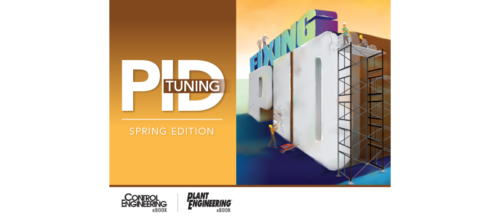Distributed control with programmable controllers
Distributed control systems (DCSs) have long been a staple of the industrial automation industry. They are powerful, extensible, and capable of running real-time control programs uninterrupted for years on end. Unfortunately, DCSs also tend to be unique to each vendor, built from proprietary hardware available from only one source.
Distributed control systems (DCSs) have long been a staple of the industrial automation industry. They are powerful, extensible, and capable of running real-time control programs uninterrupted for years on end. Unfortunately, DCSs also tend to be unique to each vendor, built from proprietary hardware available from only one source. That makes them relatively expensive and difficult to connect to foreign devices.
Programmable logic controllers (PLCs) are much the same. Only identical brands share compatible operating systems and programming languages. PC-based “soft” PLCs are easing the problem of proprietary hardware, but there still are hundreds of thousands of installed PLCs that can not share programs or communicate directly with one another.
Standard Automation (Houston, Tex.) offers another option—ControlPlus—which is essentially a “soft” DCS that runs on PLC hardware without the headaches of relay ladder logic (RLL). A ControlPlus program disables the PLC’s own RLL execution engine and simply uses the PLC as if it were an ordinary PC equipped with I/O cards. Various networking protocols are available to connect multiple PLCs running multiple programs in DCS fashion.
ControlPlus programs can be run on PLCs from Allen-Bradley (Mayfield Heights, O.), Schneider Automation (N. Andover, Mass.), GE Fanuc (Charlottesville, Va.), and Siemens Energy & Automation (Alpharetta, Ga.). As a result, ControlPlus users can benefit from all the industrial hardening, redundancy, and hot back-up capabilites that these vendors have built into their products. But unlike traditional PLC programs, ControlPlus programs can be ported from one PLC brand to another without re-coding. That’s a feat of compatibility that even soft PLCs compliant with the IEC 61131 standard can’t match.
In fact, ControlPlus isn’t based on the IEC 61131 programming standard at all. Users do configure their control programs graphically using function blocks connected via data flow paths, but the ControlPlus format is based on DCS-style SAMA symbology rather than IEC 61131 function charts. On the other hand, this is good news for users accustomed to using AutoCAD to draw their control strategies in SAMA format. The ControlPlus drawing engine is AutoCAD, allowing AutoCAD drawings to be used as ControlPlus programs directly.
Widely applicable
ControlPlus programs can handle a variety of discrete, process, and hybrid control problems. The available function blocks include function generators, pulse controllers, sequencers, and PID loops. With these blocks I could conceivably build some fairly sophisticated control strategies such as feedforward, cascade, and multivariable control. And for more challenging batch problems and loop tuning, ControlPlus includes InBatch and Expertune as application modules (from Wonderware in Irvine, Calif. and Expertune Software in Hubertus, Wis., respectively).
ControlPlus also features either Wonderware’s InTouch or GE Fanuc’s Cimplicity operator interface software for monitoring the controlled process. For debugging the control strategy itself, ControlPlus includes a facility for viewing animated control diagrams with either simulated or live process data. For documenting the completed control system, ControlPlus automatically generates I/O configuration reports, cross reference analyses, bills of materials, instrument indexes, and wiring diagrams.
ControlPlus programs are created on a Pentium PC running Microsoft Windows 95 or Windows NT. At least 32 Mbytes of RAM are required. Multiple controllers can be networked via Ethernet, token ring network, or TCP/IP protocols. ControlPlus controllers can also be interfaced to legacy control systems without replacing their existing programs. Interface modules are available for DCSs, PLCs, and analog controllers from Elsag-Bailey (Wickliffe, O.), Fisher-Rosemount (Austin, Tex., Honeywell IAC (Phoenix, Ariz.), Yokogawa Corp. of America (Newnan, Ga.), the Foxboro Company (Foxboro, Mass.), Opto 22 (Temecula, Ca.), and Moore Products (Spring House, Pa.). The latest version of ControlPlus (rev 5.0) starts at $4,500.
For more information on ControlPlus, visit www.controleng.com/info .
Author Information
Consulting Editor, Vance J. VanDoren, Ph.D., P.E., is president of VanDoren Industries, West Lafayette, Ind.
Do you have experience and expertise with the topics mentioned in this content? You should consider contributing to our CFE Media editorial team and getting the recognition you and your company deserve. Click here to start this process.


